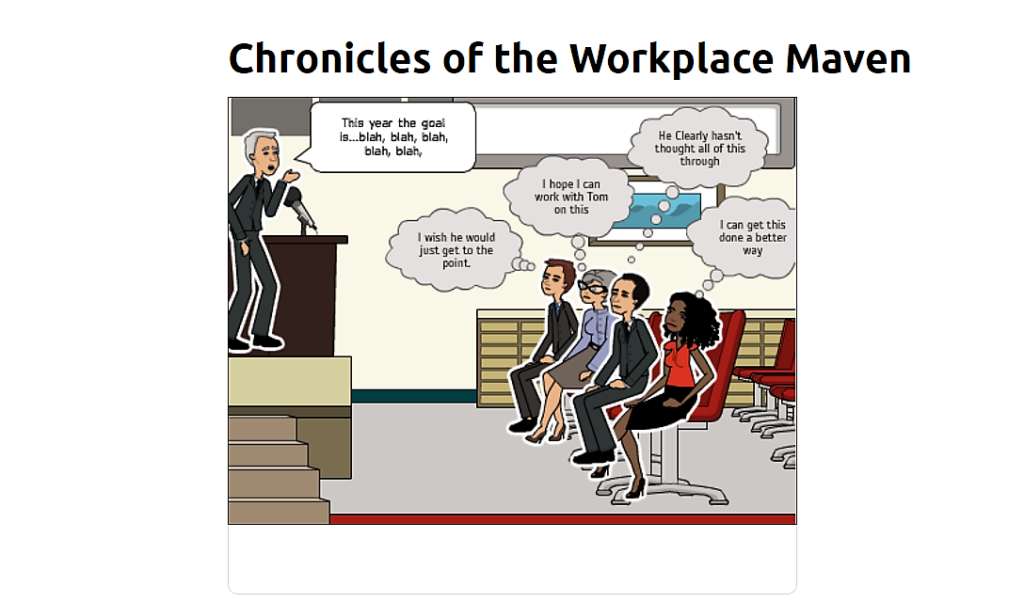If you often find yourself frustrated from repeated ineffective conversations with colleagues, supervisors or your direct reports, the issue may not be the person, but merely the fact that we all have different communication styles that ultimately determines how successful our communication is with others. Most workplaces are made up of a variety of individuals, each of which have an assortment of communication styles. While most people have a blend of the various styles, each person will have a principal communication style. DiSC profile categorizes the 4 primary communication styles as Dominant, Influencer, Steady or Conscientious. Understanding and adapting your communication to reach individuals based on their communication style will help you to build strong workplace relationships and effectively get your message across to the various audiences and stakeholders in your workplace.
Dominant – Someone with a “dominant” communication style, also known as the “director” is a results oriented individual with little focus on the people aspect. While this person may come off cold and aggressive, don’t take it personal – they are simply direct and to the point and have little interest in establishing workplace relationships but instead are more focused on getting the job done. How to effectively communicate with the Dominant Communicator: Minimize the small talk; be brief and to the point; and most importantly, focus on the end-result, not all the details that need to happen to get there. Provide them concrete feedback at the end of projects or initiatives to demonstrate to them how goals have been achieved through their efforts so that they remain engaged.
Influencer – The “influencer” aka “socializer” is the social butterfly of the office. They know everyone in the office, place a high value on building relationships and do not like working alone. Their enthusiasm and optimism draw people in, but to stay in their good graces you cannot focus on the negative which means certain things may go unaddressed. Being the emotional beings that they are, they often go with their “gut” and make impulsive decisions because they aren’t afraid to take risks. How to effectively communicate with an Influencer: Be prepared to engage in small talk and/or socialize. Don’t use a bunch of facts or logic to justify going in a certain direction or making a decision, rather, talk about experiences and people (for instance, what someone else has done or how someone else was impacted). Because the inevitable socializing will likely cause things to get off track and go off on tangents, be sure to confirm what everyone’s understanding is and who will be doing what, then follow-up that understanding in writing so that everyone is on the same page.
Steady – The “steady” communicator is also people oriented but prefers less intrusive interactions than the socializer. This will likely be the person you tend to rely on because they are dependable, consistent and work well with others. They avoid drama at all costs, to the extent that they usually try to keep everyone happy even if it interferes with being able to get the job done. They are meticulous which results in good work product but to ensure this they are working at a slower/steady pace. How to effectively communicate with a Steady Communicator: Be patient, don’t push them to get what you need, or they will shut down. Give them time to process what is being asked of them and then seek agreement or understanding of the end result. It’s also useful to share personal experiences when providing context to projects. Demonstrate that you care about them as a person as much as you see them as a worker and they will be your most reliable team player.
Conscientious – this individual is your “thinker”. They are analytical, examining the pros and cons of each direction, as well as a perfectionist, tending to focus on ensuring every detail has been covered. This means it’s going to take them longer to get things done because they will be hesitant to move one way or another until they’ve weighed the pros and cons of decisions. They prefer to work alone to ensure the accountability is only on them because they think they are the only ones that can successfully get the job done. How to effectively communicate with a Conscientious Communicator: Skip the small talk and don’t push them to socialize. Present information to them in an organized comprehensive manner. Plan ahead so that you give them time to decide or feel comfortable with the direction. Presenting the conscientious with the pros and cons ahead of time along with options for each can help speed up their analysis and getting you to your results sooner.
Many of the conflicts and misunderstandings that occur in the workplace can be attributed to a lack of understanding of the different communication styles. You can improve workplace relationships and have more productive outcomes by taking the time to recognize the varying communication needs of those who you interact with in the workplace and adjust your style to meet them where they are.

